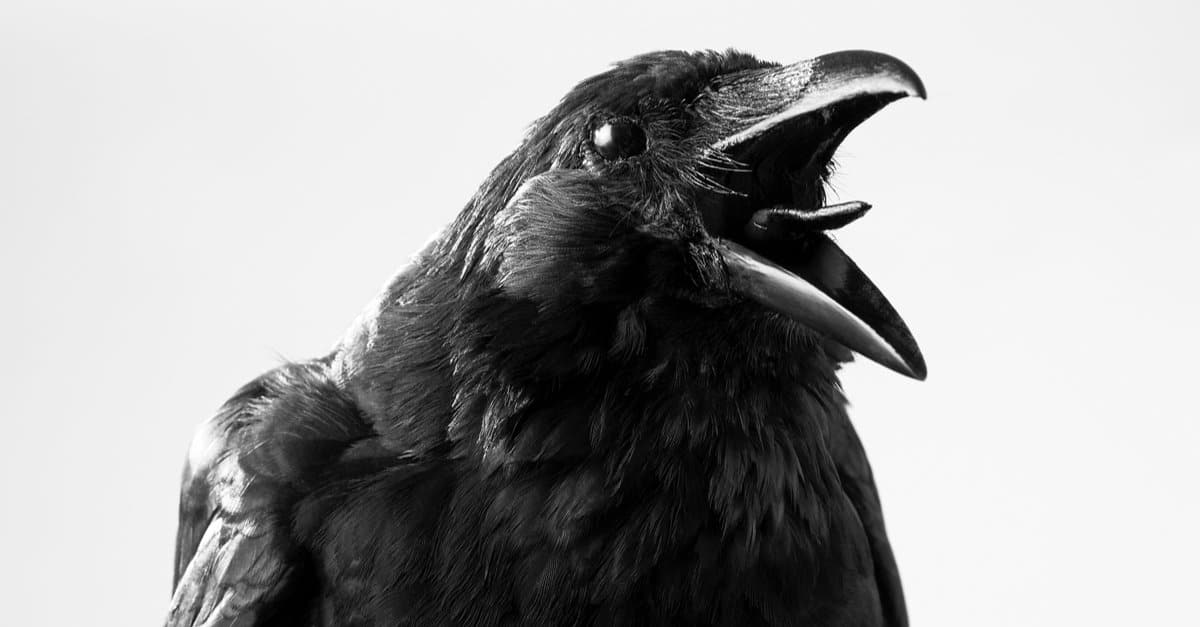Crows are large, beautiful, black birds that get a bad rap. Their intelligence is not something most people know about. These birds tend to be labeled as ominous signs and creatures that foretell bad luck. It doesn’t help that a group of crows is called a murder. Alas, they are just lovely birds, just as the sparrow is a bird and nothing more. However, their intelligence should not be overlooked.
The American Crow (Corvus brachyrhynchos)
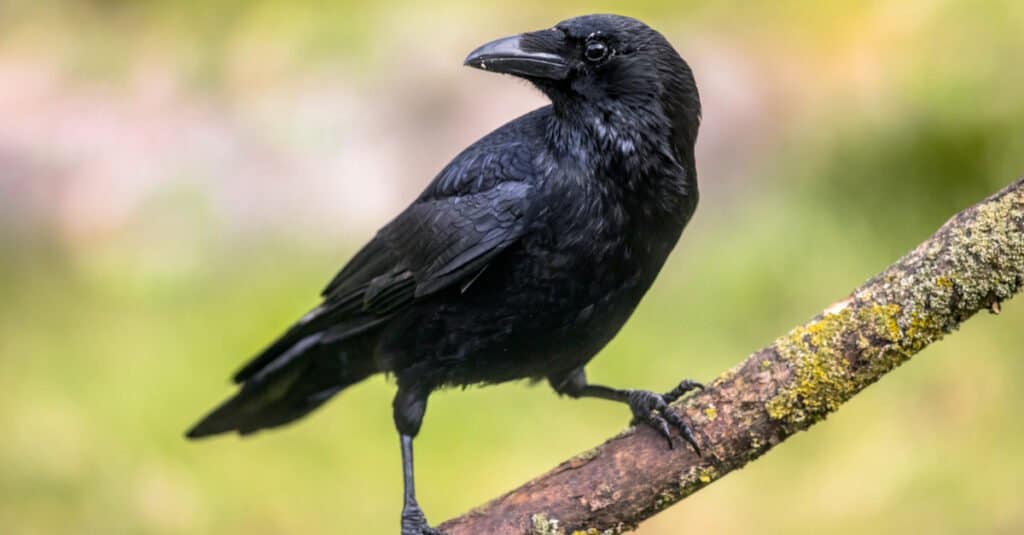
Crows are the smartest of all birds.
©Rudmer Zwerver/Shutterstock.com
Appearance: Crows are large, glossy, black birds with black bills and legs. Their feathers have an iridescent sheen. The crow’s beak is slender and straight. They are similar to ravens but are roughly half the size.
Size: Approximately 17 inches long
Weight: An average of 20 ounces
Wingspan: 2.5 feet
Habitat: They are found throughout the US, though other types of crows live worldwide. They do not visit birdfeeders but do enjoy the safety of tall trees. They can be found in cities, farmland, rural areas, forests, and coastal regions.
Diet: Crows are opportunistic eaters and eat everything from seeds, food trash, carrion, baby birds, road kill, earthworms, insects, snails, and fruit. They are not true scavengers, and carrion only makes up a small part of their diet. They cannot break the skin on small animals like squirrels, so they only eat carrion that another animal opens. However, they are very good at following other birds and animals and stealing their food.
Lifespan: Crows tend to live for 7 – 8 years in the wild but can live as long as 15. In captivity, there have been crows that have lived for the past 30 years. In New York, a captive crow lived to be 59 years old.
Crows are interesting birds who are highly social, especially during the nesting season and winter. Sometimes, they are viewed when thousands of them roost together. Some roosts they choose during the winter have been a crow hotspot for 100 years or more! They return to the same spot every year.
A family of crows sometimes remains together for many years. Though these birds are adults at four to six weeks, they do not obtain sexual maturity until they are approximately two years old. During this time, they will hang out with their parents and help raise the next sets of brothers and sisters. Once they are mature in all ways, they will go off on their own but return to their parents from time to time. They are always welcome to come back home. Once they choose a mate and nest, it’s generally not far from where they were born. They are monogamous and stay together for life but sometimes breed with other crows.
A Crow’s Intelligence
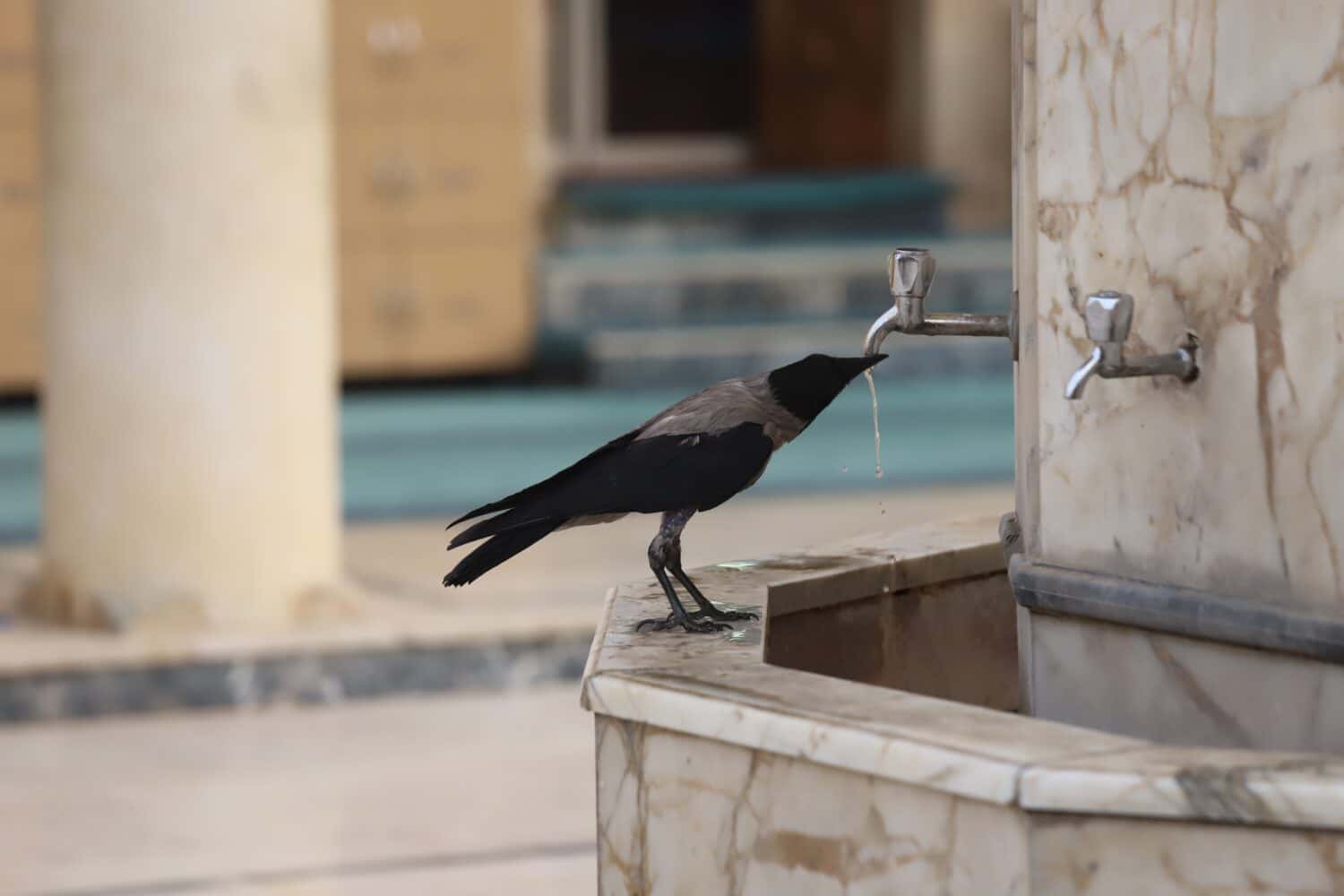
This Eurasian crow shows a prime example of their intelligence.
©Alfa Net/Shutterstock.com
Crows have shown us time and time again just how smart they are. They use tools to pry open nuts and sometimes throw clams from a massive height onto rocks to break them open. Scientists have said that the intelligence of these birds is comparable to that of a seven-year-old child. Their brain is the size of our thumbprint and makes up 2% of their body weight. This size is comparable to a primate’s brain.
The blackbirds, along with ravens, are in the Corvid family and are the only family of birds that use tools in the same fashion as primates. They are amazing birds capable of abstract reasoning and complex problem-solving and can even come together to make decisions as a group or family. The American crows are the smartest in the Corvid family. Below are several ways in which crows prove their intelligence.
Crows Can Recognize Humans
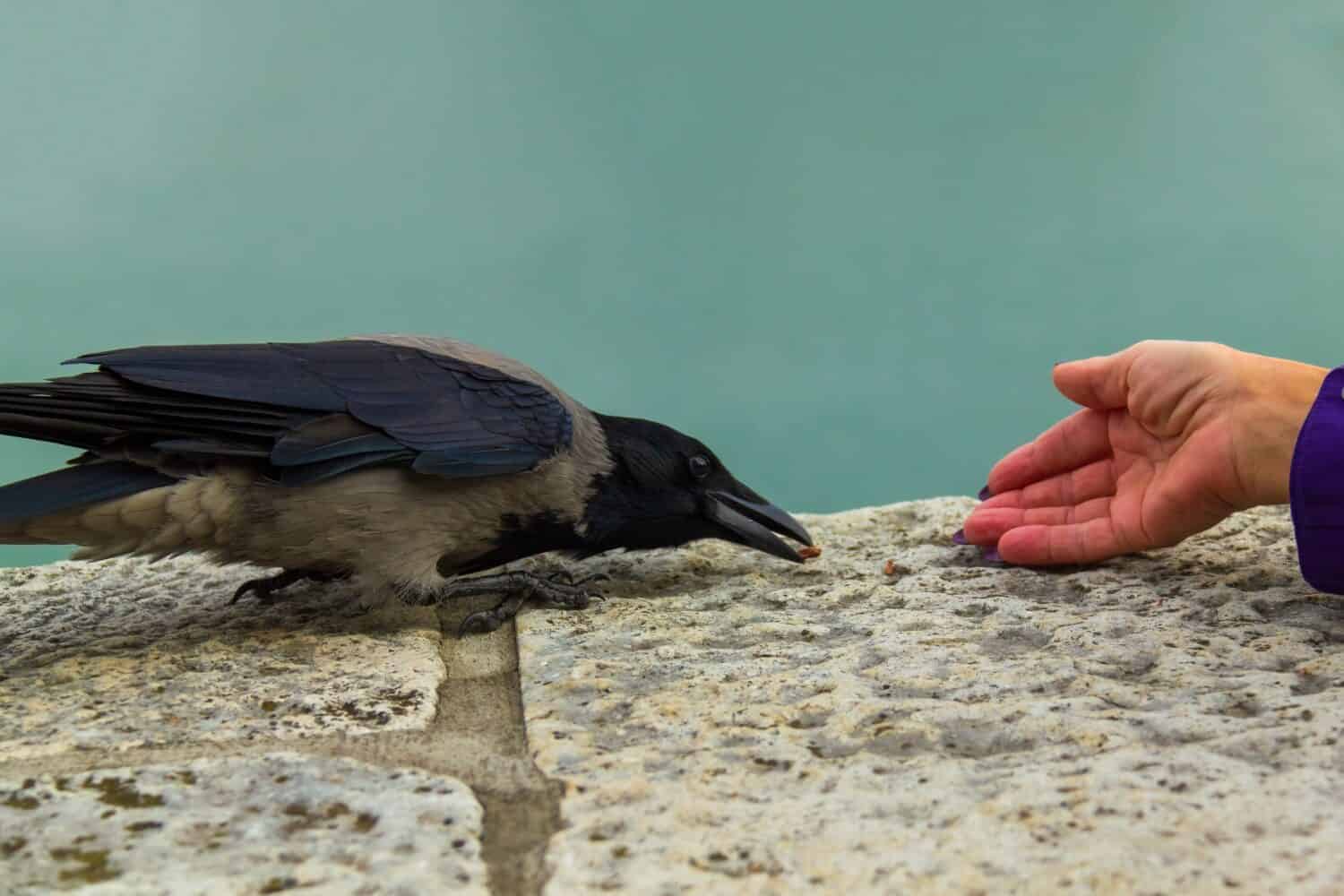
If you are kind to a crow, they will remember it each time they see you.
©Smiler99/Shutterstock.com
Let’s hope you haven’t done wrong by one of these birds because they will never forget it and your face. They will remembern’t just your face, either. Wearing a mask will not help. Scientists have proven that even with a mask, the crow will know who has harmed them and will attack. Their vengeance doesn’t end with that specific crow. They will tell their offspring about your wrongdoings, and they will also carry out revenge.
Crows Use Tools
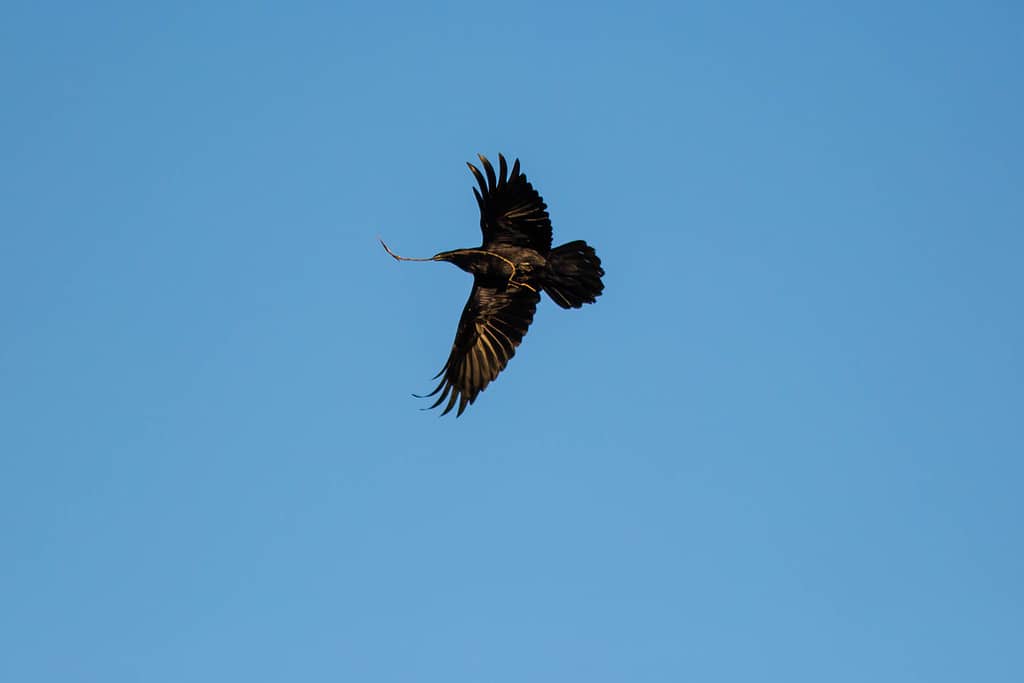
American crow carrying a stick to catch prey in a hole.
©Melissa McMasters from Memphis, TN, United States / CC BY 2.0 – Original / License
Crows not only use tools but also pleases them to do so. These clever birds use small, sharp, or hooked stripped branches to spear or lift out prey in holes. They sometimes drop rocks into a bucket to raise the water level to drink from. These birds also steal items they believe could be useful tools. The black-feathered geniuses will take a wire, a manufactured item, and bend it for many things.
Crows Hold Funerals

Death is sad, but crows gather together to discuss why the bird died so none of the others suffer the same fate.
©kristof lauwers/Shutterstock.com
When a crow passes away, a murder of crows will surround the dead bird and loudly caw together. They aren’t necessarily there to grieve the lost crow. Instead, they are discussing the danger in the area and what killed the bird. When one crow dies, it helps keep the others safe.
Crows Make Plans

All crows are amazing problem-solving birds capable of planning.
©Tiffany Sims/Shutterstock.com
Crows are impressive and brilliant birds. Their intellect spans farther than we even know. These birds are capable of planning, and they can throw problem-solving into the mix, too. They know how much they need to eat, how much they need to bring back for their family, how much they should store away, and what to do if another bird is looking to steal their food.
The birds will gather food, and if another bird is watching, they will trick them into thinking the meal is theirs. The clever Corvid will pretend to stash their food in a nearby tree or hole, then fly off. Little does the other bird know that the large black bird pretended to stash the food and instead stuck it under a wing. They will wait a bit, put the food back in their mouth, and fly back to their real nest and feed their family or hide the food in a real hiding place.
A Crow is a Good Friend to Have
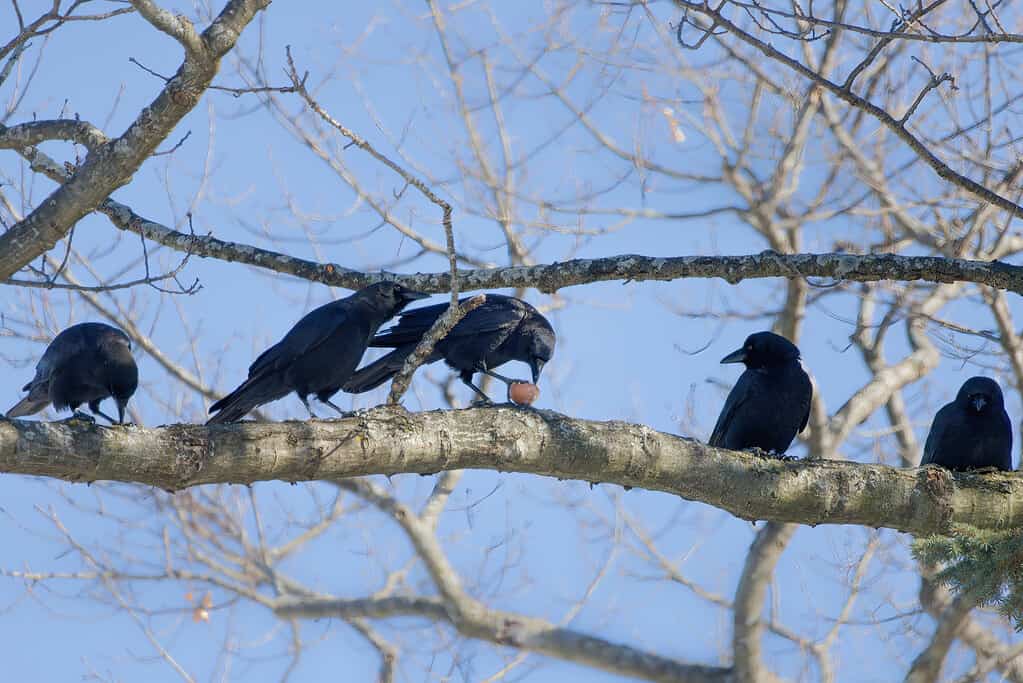
If you have the opportunity to befriend a crow, take it.
©iStock.com/Karel Bock
Crows are amazing birds who remember the kindness shown to them. So if you help one of these beautiful birds, put out water and food where they typically hang out, or do some other small but meaningful deed, they WILL remember. A fun way to attract their attention is to place a piece of silverware or a prism near food and water; they might be your new best friend.
Besides being extremely smart, they are highly adaptable animals. These birds didn’t always live in massive cities or have a solid understanding of suburban neighborhoods. They were once wild animals living on the edge of forests and civilization. Now, they are everywhere, and they aren’t all that afraid of humans, like most other animals. Having a crow for a friend is a fantastic pact with an animal without reason to trust humans.
FAQ
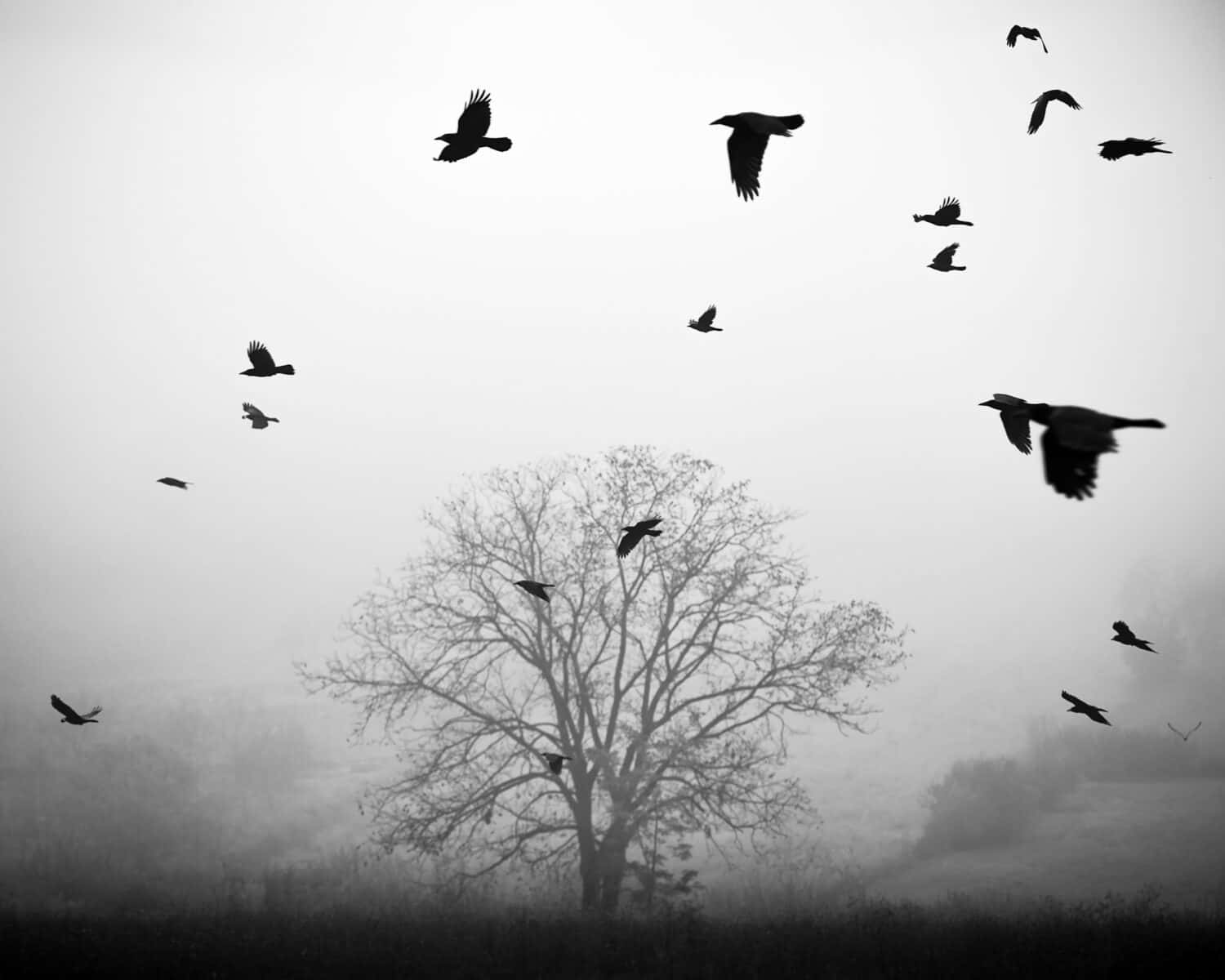
Many questions have been left unanswered regarding the lives of crows.
©Belmin Mesanovic/Shutterstock.com
Q: Why are crows so smart?
A: The bird-to-brain size ratio is similar to the primate-to-brain size. Primates are incredibly smart and capable of using tools they have made to aid food retrieval. Another factor that comes into play with crows is the amount of neurons they have packed into such a tiny brain. Since the neurons transfer thoughts and ideas to other neurons, the birds can quickly think and problem-solve. They have approximately 1.5 billion neurons in their brains, similar to that found in some primates, like the gorilla.
Q: What is the smartest animal?
A: Among the most intelligent animals are the orangutan, bottle-nosed dolphin, and chimpanzee.
Q: Do crows bring people gifts?
A: Yes, crows have been noted as bringing sure human gifts like lost earrings, shiny objects, rocks, or other items. They do this to give thanks to the person who helped them by providing food, water, or help when needed. However, it is not common.
Thank you for reading! Have some feedback for us? Contact the AZ Animals editorial team.

